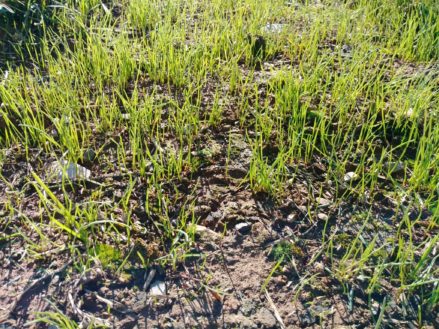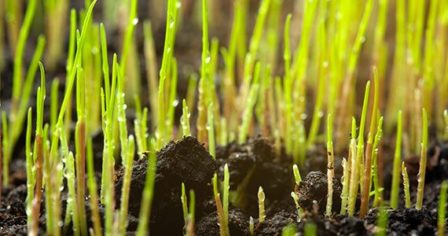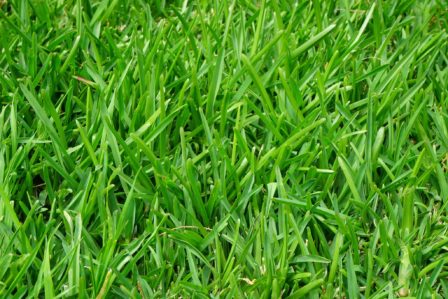We have been getting the question “When is my seeding going to be done?” a lot lately. It’s a valid question, particularly in light of the challenging year we’ve had for lawn care in Central Pennsylvania. Many clients have concerns that their seeding is being done too late in the season, and that the seed won’t come in or is too late in the season. Here, we’ll dispel some late Fall seeding myths.
It’s too late in the year to do seeding
Myth: After a certain date on the calendar, you’re too late in the season to do an effective seeding job on a lawn.
Fact: Seeding results have to do with a whole host of factors. The date on your calendar is not one of them.
Factors that DO effect seeding are things like soil temperature, moisture in the soil, nutrient availability, soil profile (how deep it is), the amount of available sunlight, and the amount of moisture given to the new seed (how you water it).
The assumption that many people make here is that because it’s “too late in the year,” that the soil temperatures will not be good for seed to come in. In fact, over the last few years, we’ve had great soil temperatures for germination well into November. We have no reason to suspect that this trend will not continue this year.
 You can’t seed once there’s been a frost
You can’t seed once there’s been a frost
Myth: Once there’s been a frost, there is no chance that seed will germinate.
Fact: An early season frost may affect seed that has already germinated, but should not affect seed still in its casing. Also, a single frost doesn’t mean that soil temperatures will not continue to be favorable to germination later in the Fall.
The onset of early Fall frost does not mean your seeding hopes are dashed. This is especially true if you seeded within a couple of days of that frost, or if you haven’t seeded at all yet.
Here’s the science: seeds that are still in their casing are relatively unaffected by freezing temperatures. They can lay dormant for a long time, and just “wait it out” until conditions are favorable for germination. This is why you may have grass types pop up in your lawn that you don’t recognize. We frequently get questions about this – “Where did that grass come from?” as a client points to a clump of tall fescue or a large patch of rough bluegrass.
The answer is often that the seed has been in the soil for some time, waiting for good conditions to begin its germination and maturing process. Once conditions are right, the grass will grow. The same holds true to for the healthy seed you’re trying to introduce late in the season!
If your lawn was recently seeded, and the seeds have germinated but are still very immature, there’s a chance those seedlings will die with an early frost. In these cases, there’s often seed that hasn’t germinated yet laying alongside that new seed. When Spring arrives, you’ll likely get continued growth from seed sown the prior Fall.
If you seed too late in the Fall, your lawn won’t fill in
Myth: Seeding late in Fall means your lawn will never fill in.
Fact: Dormant seeding often yields incredibly satisfactory results.
Late Fall seeding often generates an incredibly productive growing season the following year. That seed will lay dormant until conditions are right. Dormant seeding is a very viable option for re-establishing the desired turf density.
Some of our clients (including the owner of our company) get this done for their property. This is also how we maintain the turf density on many of the athletic fields we’re responsible for in school districts, colleges, and universities across the Mid-State.
If late Fall seeding works to maintain turf density on a lacrosse field (perhaps the most damaging sport to turf), it will certainly help you maintain a thick, beautiful lawn.
If you do a late Fall seeding, you can’t apply crabgrass control
 Myth: Because you seeded so late in the season, you are going to have to deal with crabgrass next Summer, or risk killing that seed.
Myth: Because you seeded so late in the season, you are going to have to deal with crabgrass next Summer, or risk killing that seed.
Fact: There are other options for control products that do not interfere with your seeding.
This myth was, at one time, based in fact. For years, the only crabgrass control products (call “pre-emergent herbicides”) worked that way. They created a barrier in the soil, and any type of grassy plant that came into contact with it was controlled.
In recent years, lawn care technology has come a long way. Your lawn care professionals now have a few different options to selectively target grassy weeds. This means your late Fall seeding will still have a chance to germinate in the Spring, while still controlling the crabgrass. It’s the agronomic equivalent of “having your cake and eating it, too.” It’s the best of both worlds.
You should communicate with your lawn care professionals if you have done a late Fall seeding yourself. This will allow them to adjust your program to make sure you get those specialized products. If you contracted your service provider to do the seeding, check to make sure they’ve adjusted your lawn care program for Spring to compensate.
If your lawn doesn’t look filled in by Winter, your seeding didn’t work
Myth: A re-seeded lawn should look completely “thick” by Winter.
Fact: Cool-season grasses take a long time to mature.
Cool-season grasses are what we grow best here in Central Pennsylvania. There are four main varieties that grow well here: perennial ryegrass, Kentucky bluegrass, tall fescue and fine fescue. Most of them germinate in a moderate amount of time (10-14 days). Bluegrass can take up to three weeks to begin to germinate.
Once the germination process has begun, cool-season grasses have a maturation process they go through (like every other living thing). They often look like a single “hair” growing out of the ground for a number of months. These seedlings then go through a process called “tillering” where they “fill out” – you’ll have several blades of grass on a single plant.
Tillering often takes about six months for cool-season grasses, regardless of species. It’s going to be mid-to-late Spring before that tillering happens.
Conclusion
For the many reasons listed above here, we recommend waiting until late April or early May in our area to evaluate whether or not a seeding has been effective. It may take that long to determine how much tillering has happened.
If you’re an existing client of ours, please contact us with any concerns you may have about your lawn. Also, please know that we will be making program adjustments (like using a different crabgrass control) to seeding we’re performing later in the season.
If you’d like to speak to one of our lawn care professionals about lawn care or seeding questions, please Contact Us.

